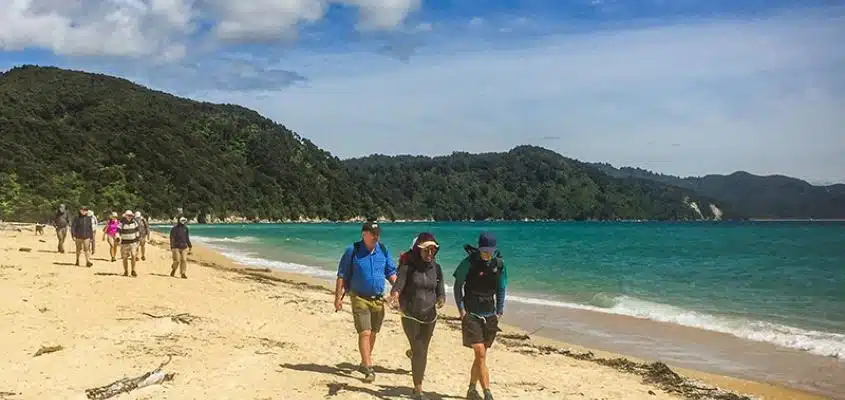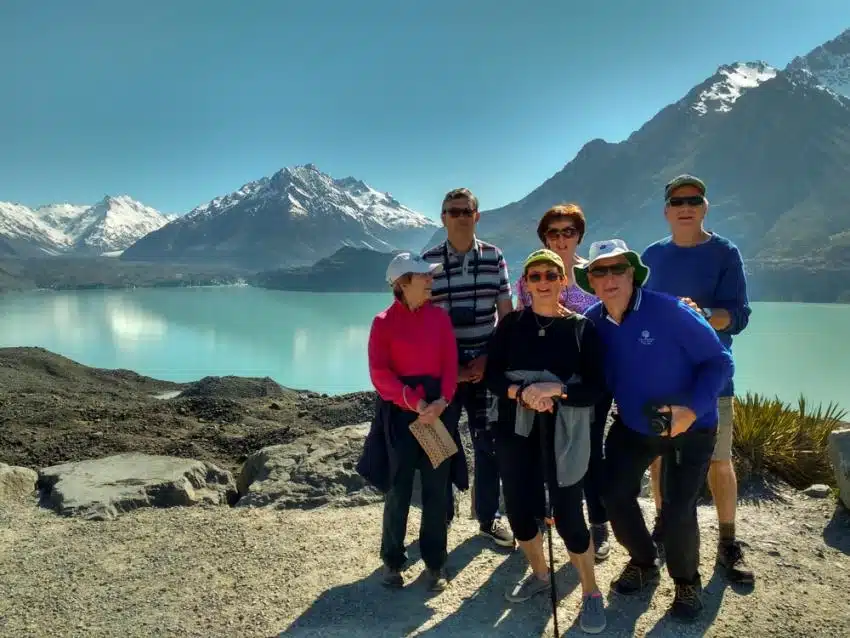For many people planning a trip to New Zealand, one of the activities they’re looking forward to most of all is getting out and walking in our amazing outdoor landscapes.
The great thing about New Zealand is that we have so many excellent walking tracks which are very accessible, well maintained, with excellent facilities and signage and best of all will take you into some amazing countryside in no time at all. You don’t have to be super fit or even an experienced hiker, if you enjoy walking around your hometown (or the golf course!) there are literally hundreds of tracks all over the country you’ll love.
If you love the idea of getting out on foot in our great outdoors but not slogging through the 10-15 mile days that the overnight Great Walks like the Milford & Routeburn Tracks require, then this “Beginner’s Guide to Walking in New Zealand” is for you…
Who is this Guide for?
Walking is such a broad term, and can cover anything from extreme mountaineering on glaciers and rocks, to short walks of 20 minutes on flat boardwalks. At MoaTrek we show love showing visitors to New Zealand the very best short walks in the country on our small group tours.
Our tour guests tend to be people over 50, who are fairly fit and active, but their dreams of playing in the NFL or NBA are probably behind them now! (For us Kiwis it’s the All Blacks) You may even be nursing a sore knee or back (but that won’t put you off travelling!) but still can’t wait to get out on the trails of New Zealand.
This “Beginner’s Guide to Walking in New Zealand” is for anyone who would like to get out and walk from 2 to 4 hours each day as part of a two to three week holiday around New Zealand. The kind of walk that leaves you feeling invigorated and ready to enjoy some of the best New Zealand food and wine. You don’t have to be an experienced hiker at all, just ready and willing!
Five Reasons to include Walking in New Zealand on your Holiday
- You don’t need any Experience or Equipment
Most of us have been walking all our lives so we’re already pretty experienced so all you need is a good pair of walking shoes and a little energy and you’re set to go. Compare walking with other outdoor pursuits like cycling, fishing or golf and you realize it’s a very low maintenance option. - Outstanding Walking Infrastructure & Facilities
With excellent infrastructure such as well maintained tracks, great signage, shelters and toilets in our National Parks (hats off to our Department of Conservation for all this) everything is right there to make your walks easy and safe. - Real diversity of Walking Environments in Short Distances
Where else in the world can you walk on beaches, through rainforest, up glacial valleys, through alpine flower fields and on volcanoes all in the same trip? This is all possible in a two or three week holiday in New Zealand. When you look back on your walking photos from New Zealand you’ll pinch yourself at all the different places you’ve discovered on foot, we always do! - Walking is Great Exercise
We all know holidays can be a time when we are tempted to indulge a little to much in the finer things in life, like fantastic food and wine in a new country! So building a short walk or 2 – 4 hours a day into you holiday goes some way to balancing this out. Now we can’t guarantee you’ll be 100% calorie neutral on your holiday but we can guarantee that the food and wine you enjoy after your walk will taste wonderful! - Walking with others is Quality Time
If you’re travelling with new or old friends, heading off on a walk together means you’ll spend some excellent time together in a natural, unhurried environment. Whether it’s your partner of fifty years, or new friends on your tour, time spent walking with others is always quality time.
One of our favourite short walks – Kea Point in Mt Cook National Park
To give you an example, our idea of a great walk is somewhere like Kea Point and the Hooker Valley in Mt Cook National Park, it’s the perfect place for a walk with stunning views of our highest mountains and the surrounding glaciers and lakes which you can enjoy in under 2 – 3 hours and be back enjoying lunch at the Hermitage Hotel. It’s a super easy walk and can be enjoyed all year round.
Scroll through some pictures below of some recent guests enjoying the Kea Point walk in Mt Cook, including one group who timed a spring snowfall perfectly for amazing views and photos.
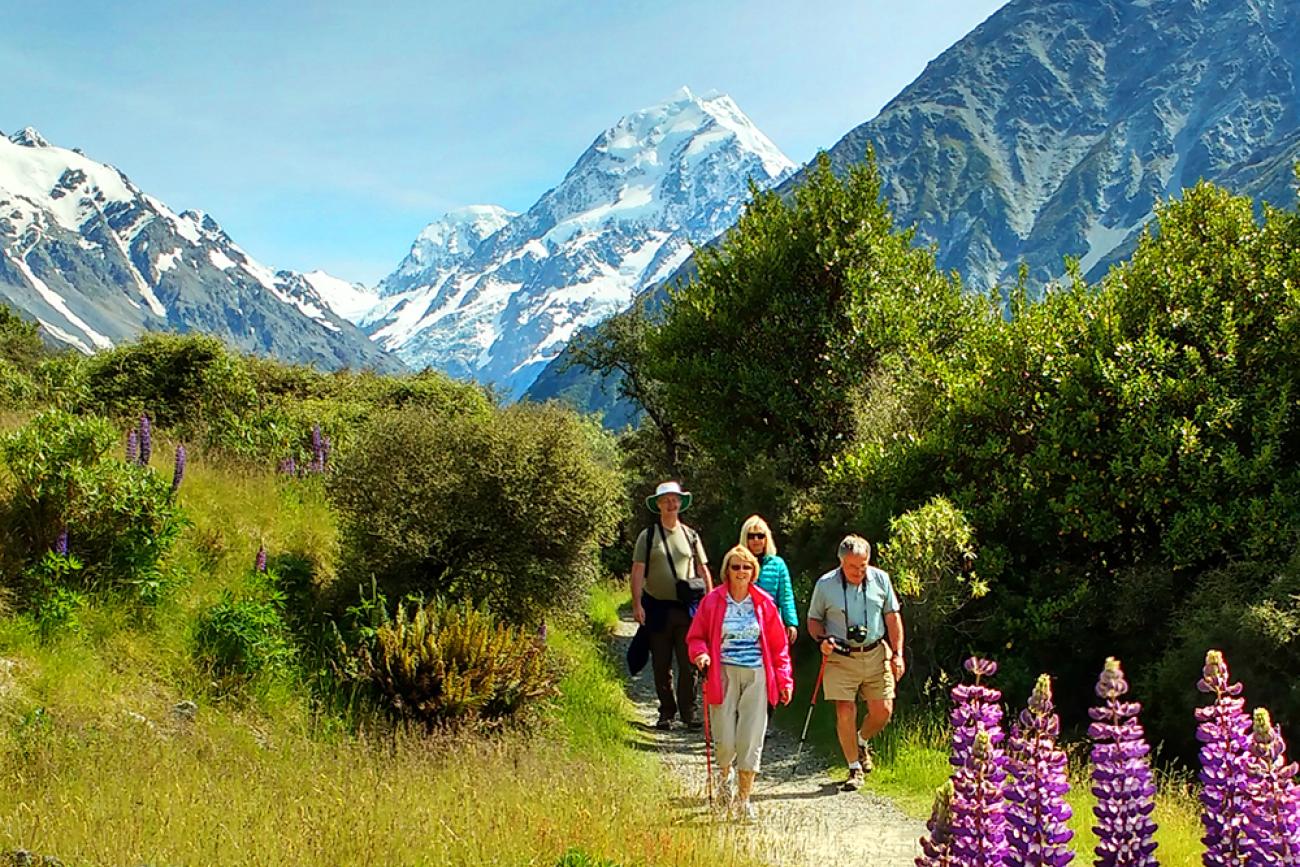
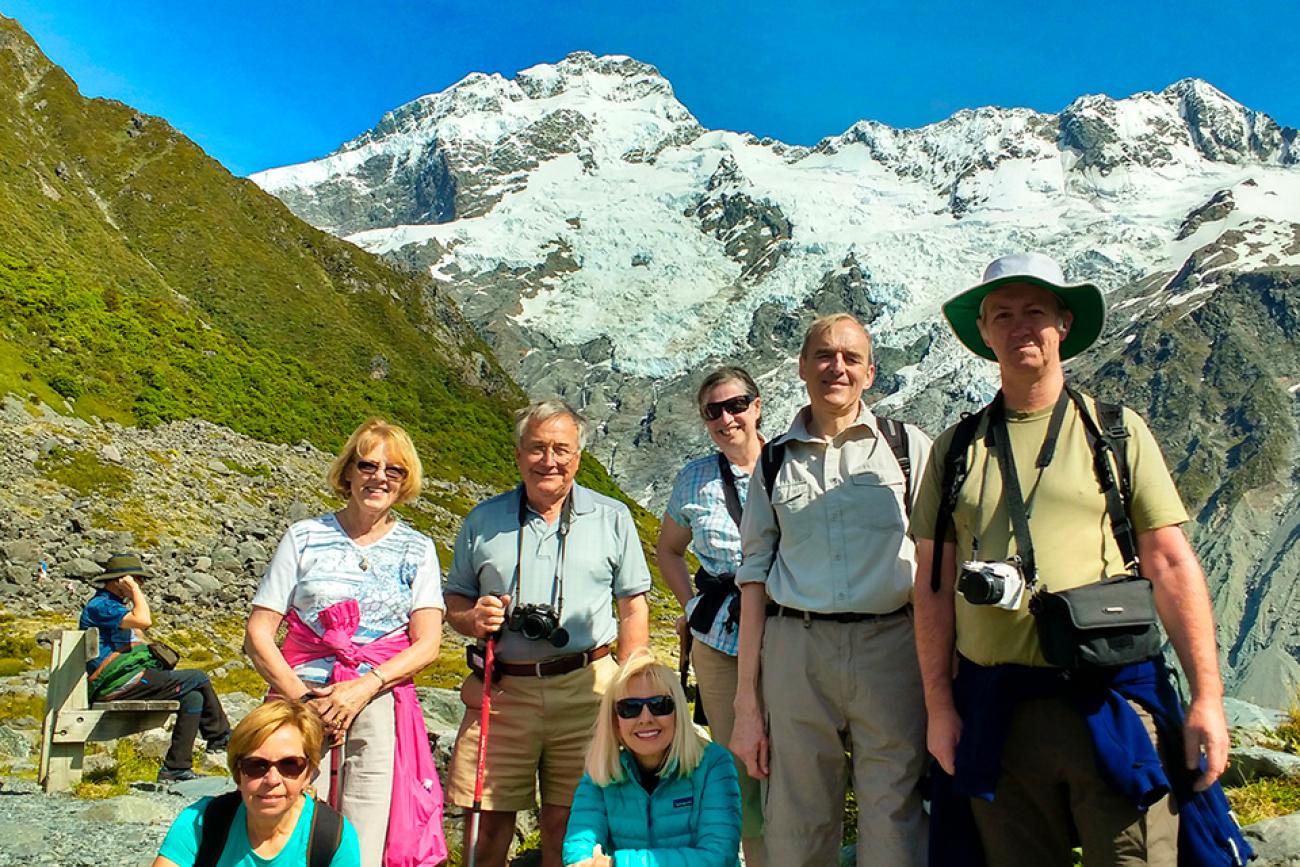
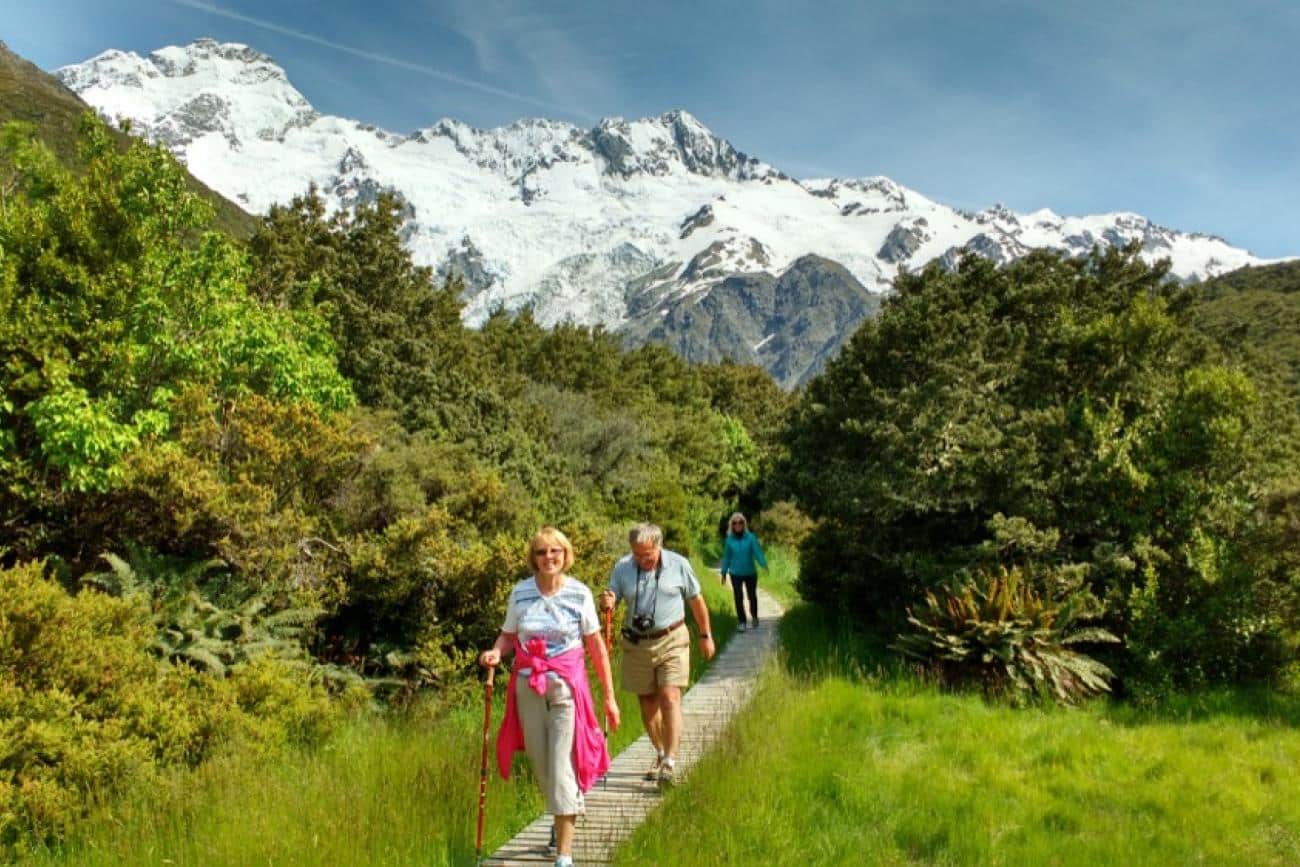
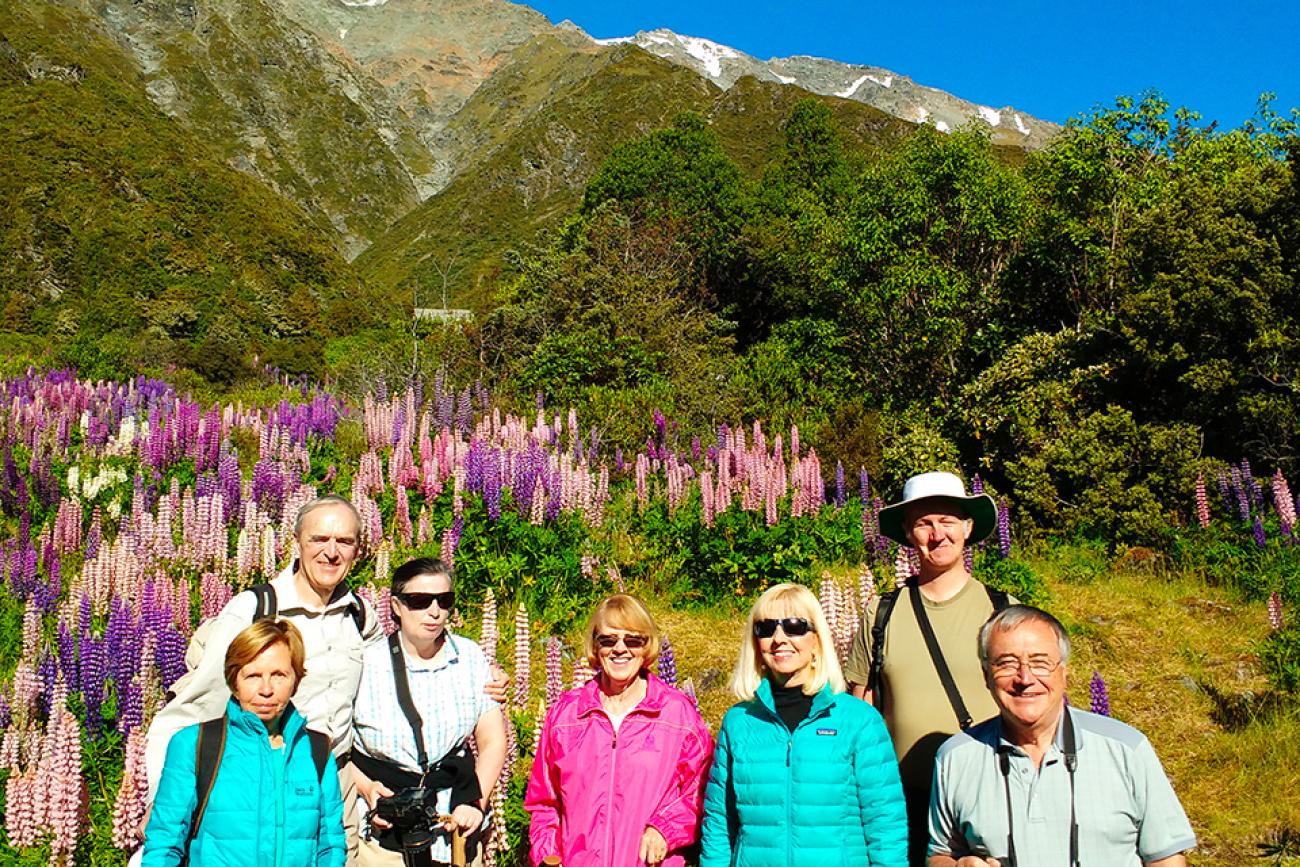
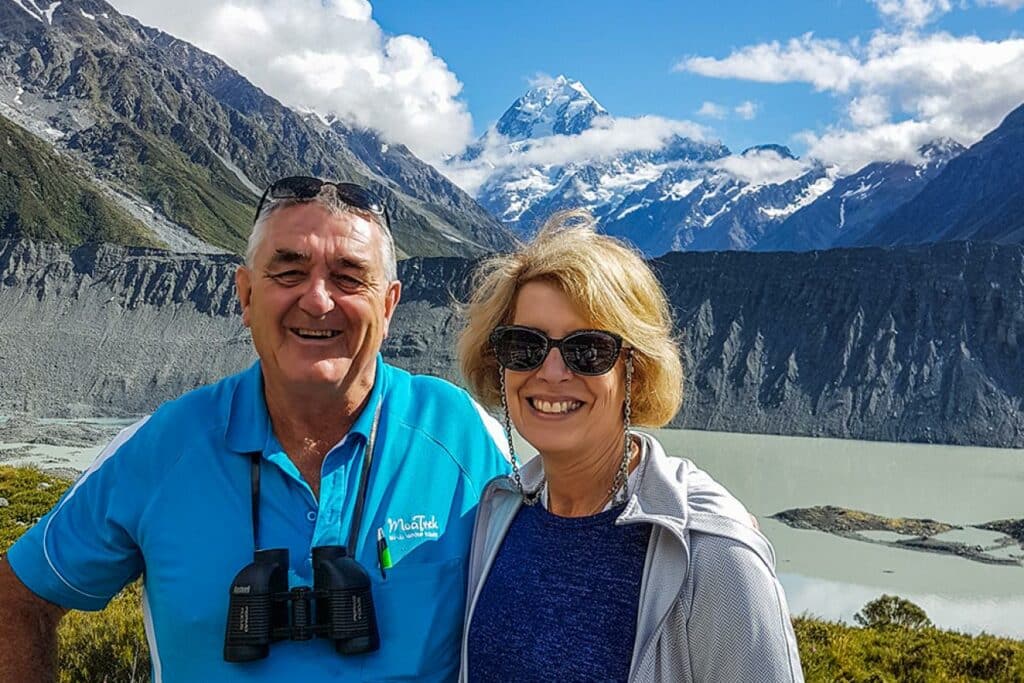
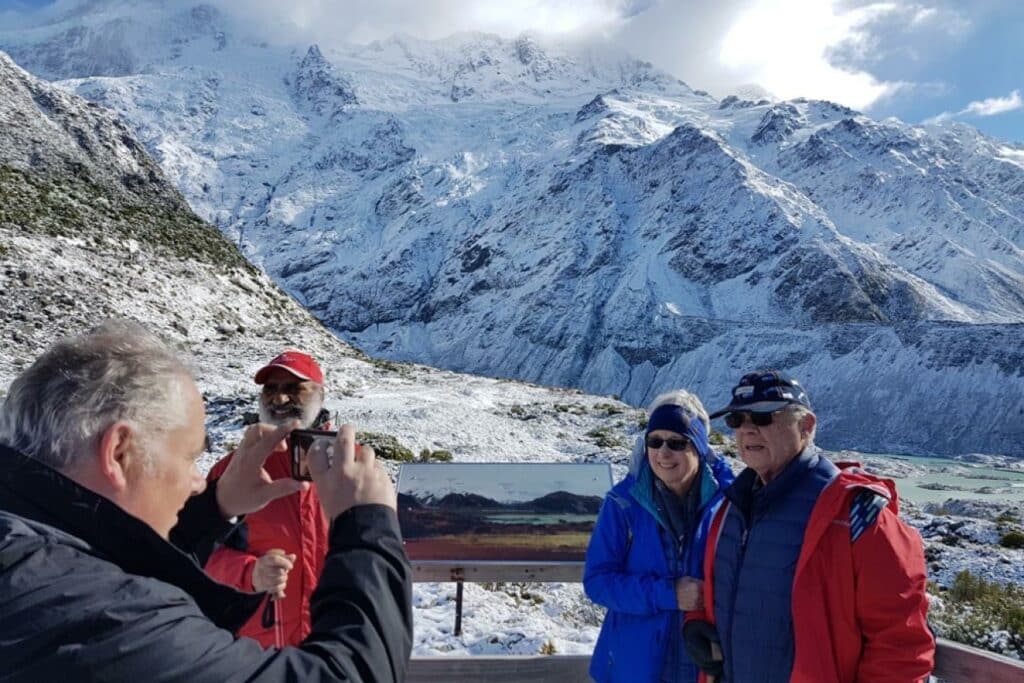
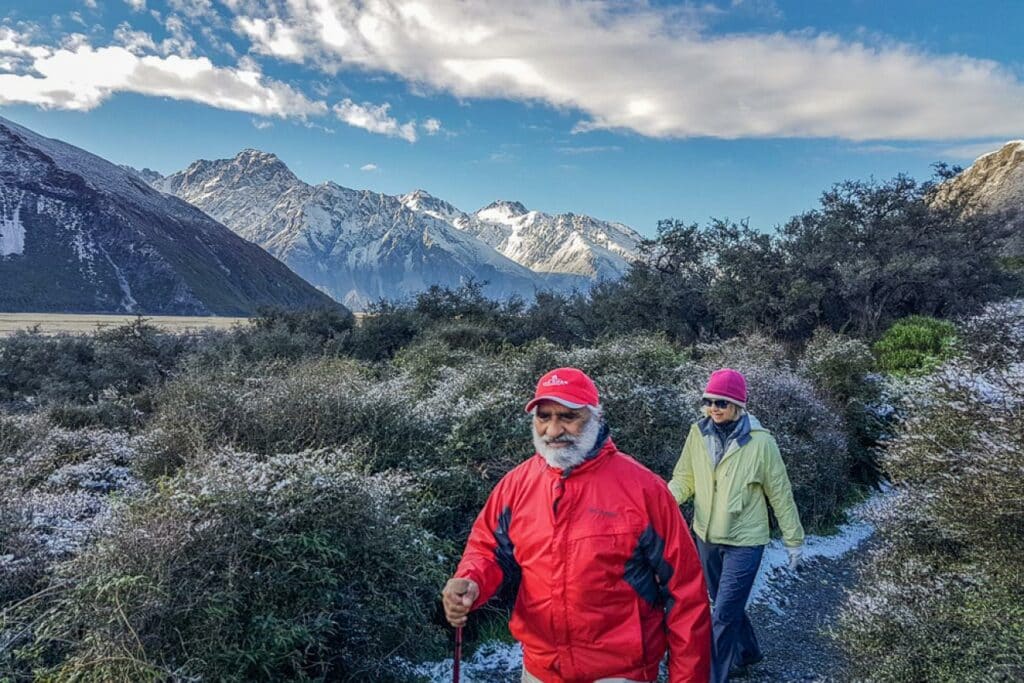
What are the best Short Walks in New Zealand?
It’s always hard to pick a list of the best short walks in New Zealand, as you’re always going to leave some really good ones out, so we’ll go out on a limb and pick our top ten short walks in New Zealand, as enjoyed by our guests and guides since 1971!
The MoaTrek list of the Best Short Walks in New Zealand
- Tongariro National Park (Taranaki Falls)
Grade – medium. Length 6 km (3.7miles). Time – 2 hours return. - Abel Tasman National Park (From Awaroa Inlet to Tonga Quarry)
Grade – medium Length 4 km (2.4 miles). Walking time – 2 hours (point to point; transport via water taxi). - Routeburn Track Day Walk
Grade – medium. Length – 8km (5 miles). Time – 6 to 8 hours. - Tasman Glacier & Blue Lakes, Mt Cook
Grade – easy. Length – 2.6 km return (1.6 miles). Time – 1 hour. - Flagstaff Hill, Bay of Islands
Grade – easy. Length – 2.5km (1.5 miles). Time – 1 hour return. - Kura Tawhiti, Castle Hill, Canterbury
Grade – easy. Length – Up to 1.5 km (1 mile). Time – 20 min to 1 hour return. - Lake Matheson, Fox Glacier
Grade – easy. Length – 2.6km circuit (1.6 miles). Time – 1 hour 30 minutes. - Pororari River, Paparoa National Park
Grade – easy. Length – 7km return (4.3 miles). Time – 2 hours. - Mt Iron, Wanaka
Grade – medium. Length – 4.5km (2.7 miles). Time – 1.5 hours return. - Rangitoto Island Summit Walk
Grade – medium. Length – 7km return (4.3 miles). Time – 1.5 – 2 hours return.
For more about these walks and some others we love take a look at this introduction to the short walks on our tours, from Flagstaff Hill in the Bay of Islands, Tongariro National Park, Abel Tasman National Park down to the Routeburn Track in the South.
What will I see on these Short Walks?
Before you read on, take a moment to scroll through some pictures taken by guests out walking on our tours over the past season. The scenery and landscapes are amazing and it’s hard to believe that all these pictures were taken on walks between 2 and 4 hours.
Scroll through some photos of our favourite short walks below, all of these pics were taken by our Kiwi Guides or guests on our tours.
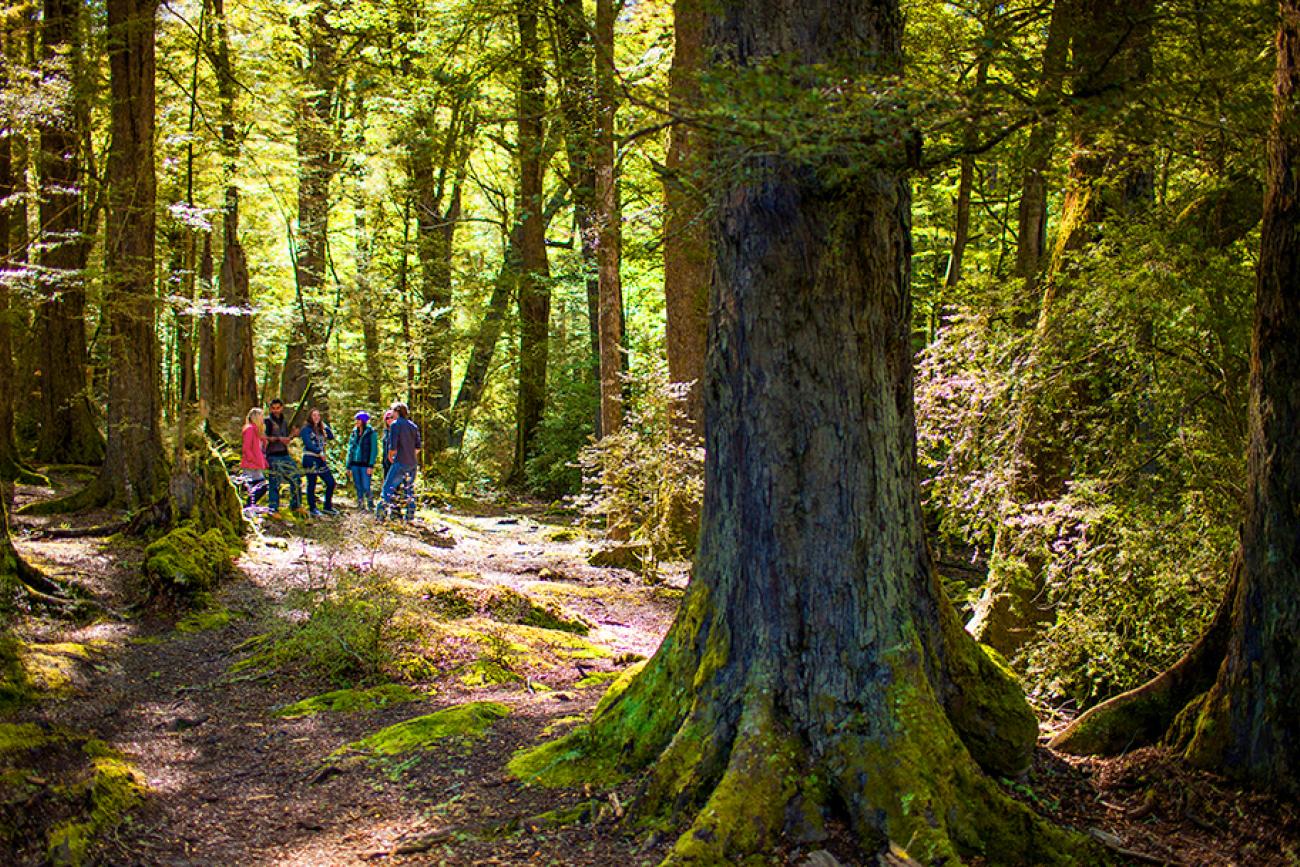
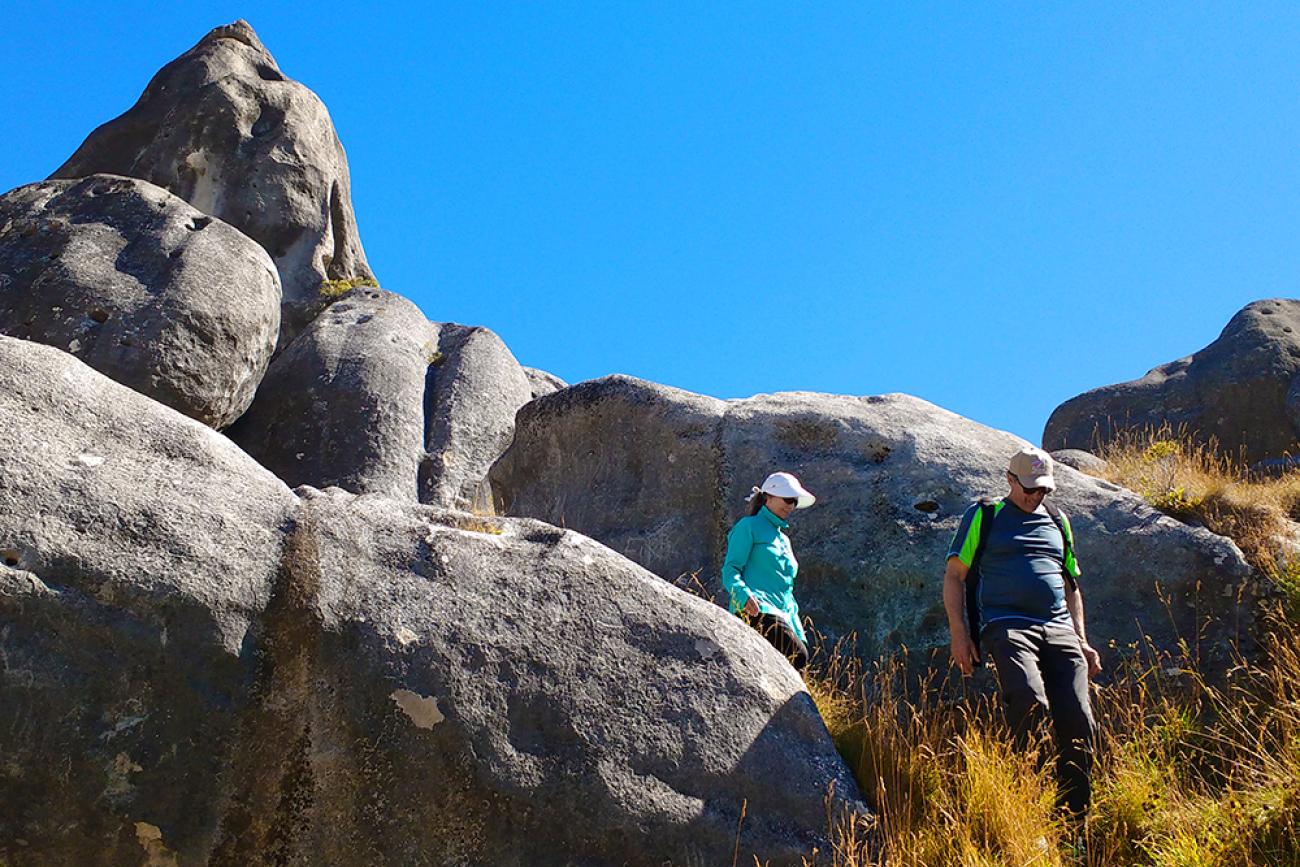
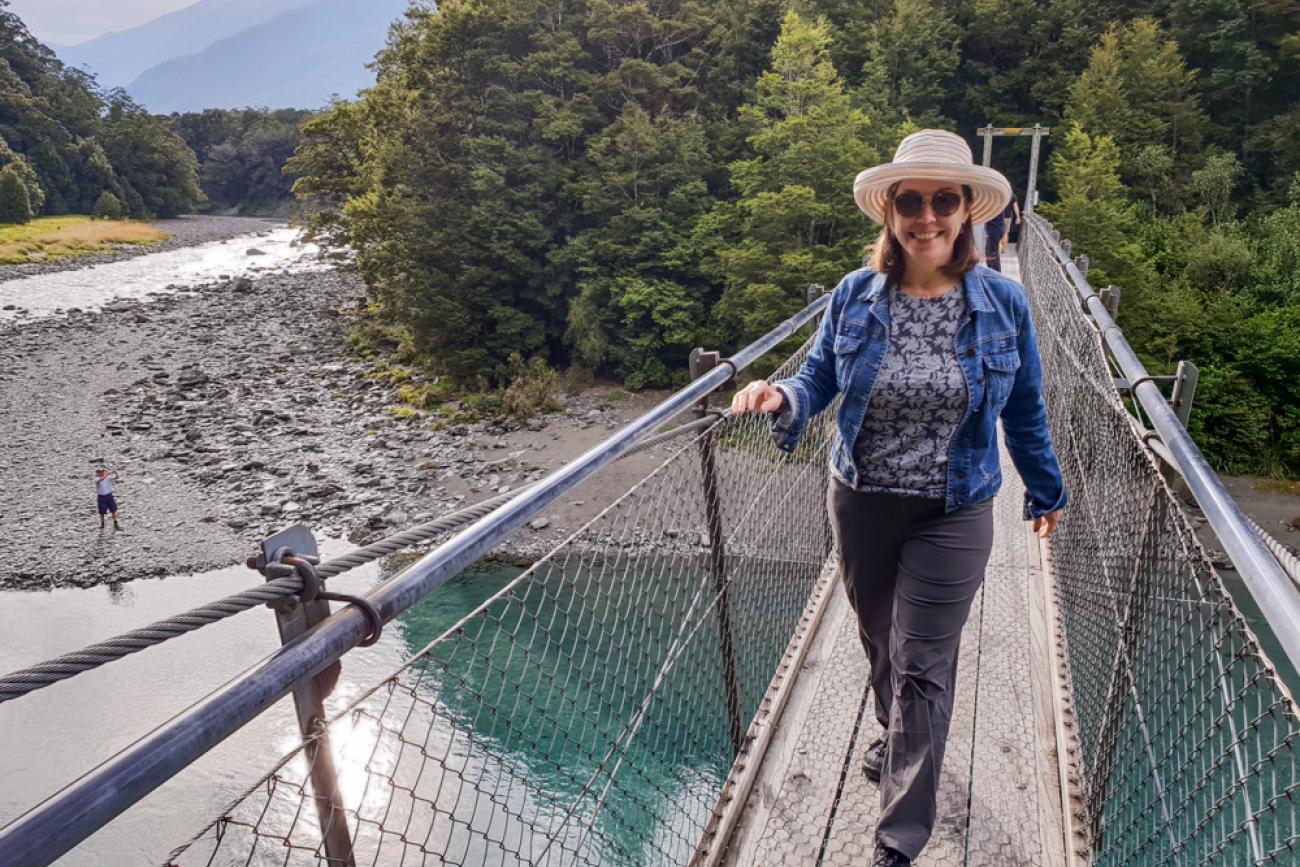
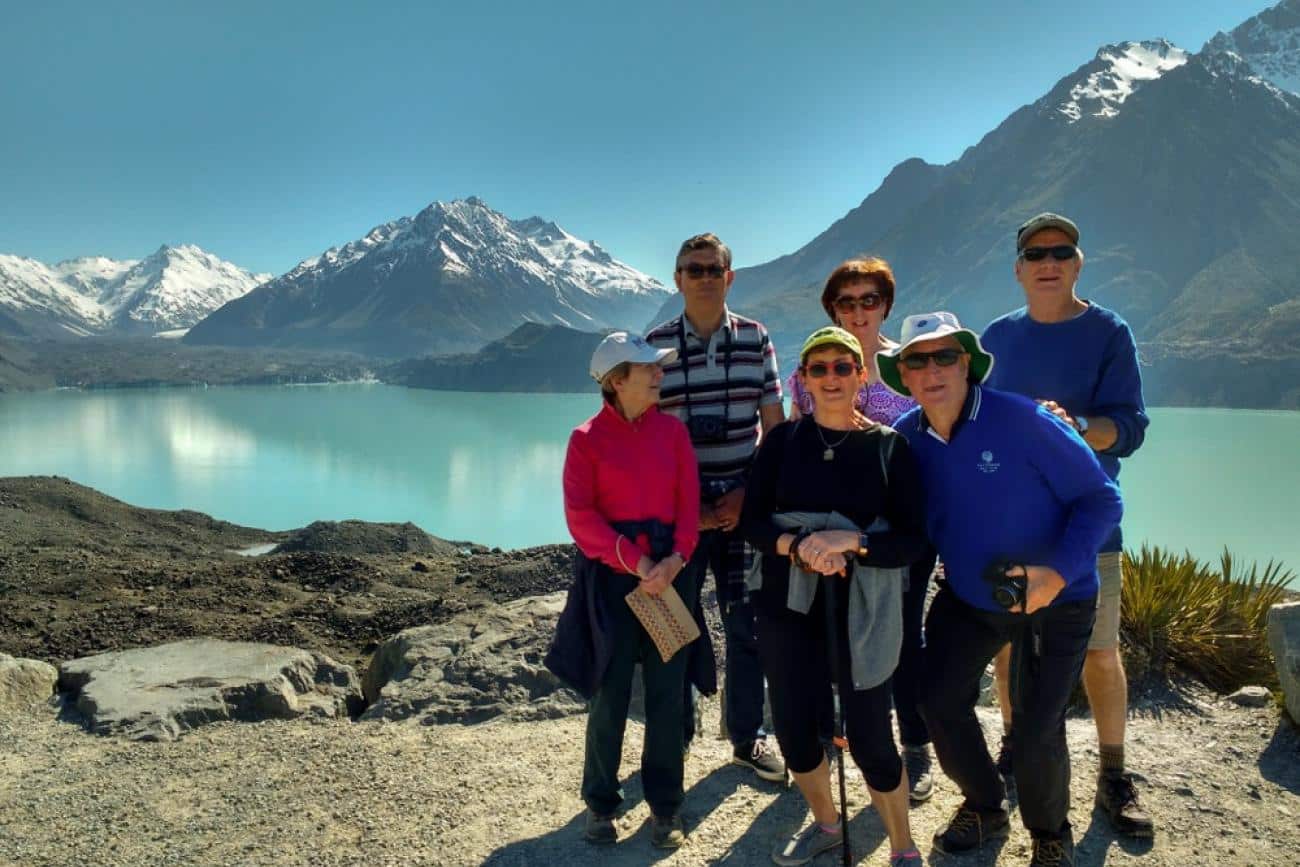
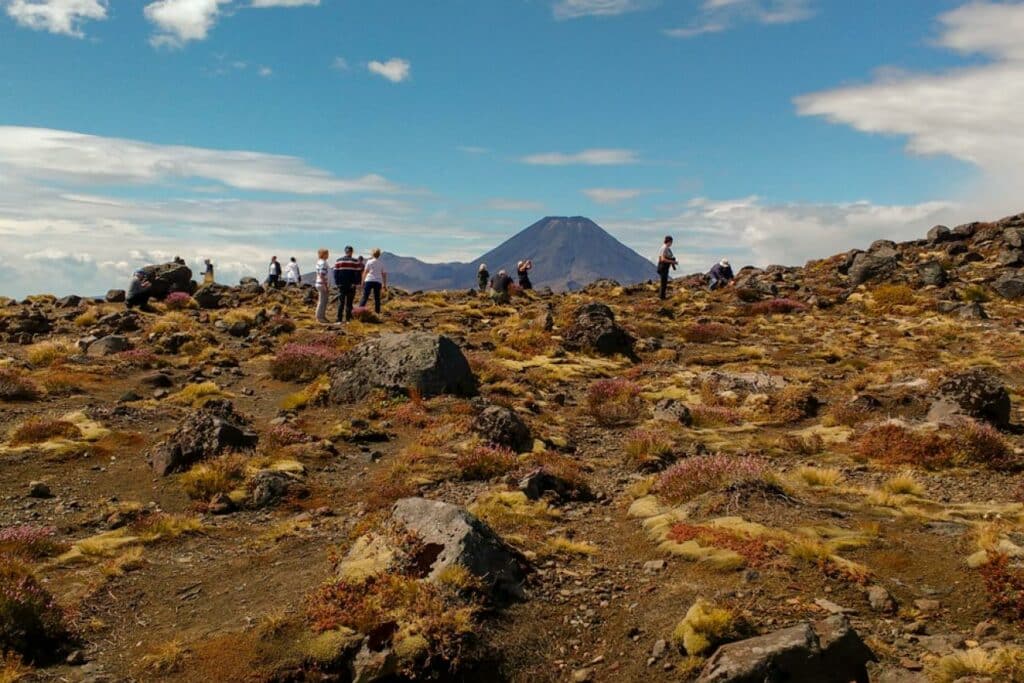
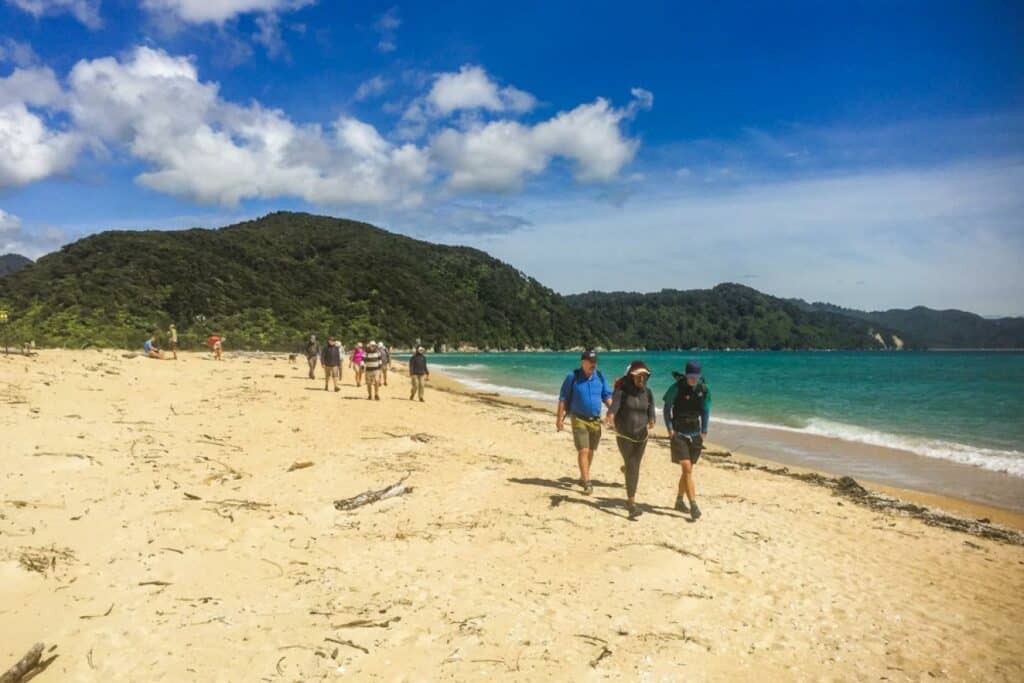
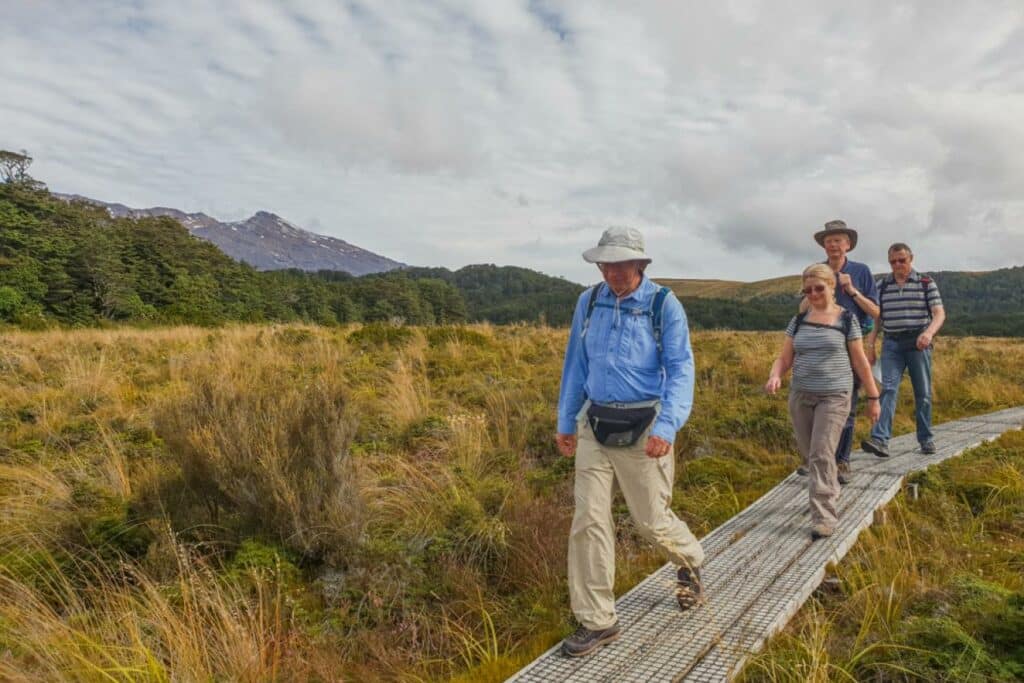
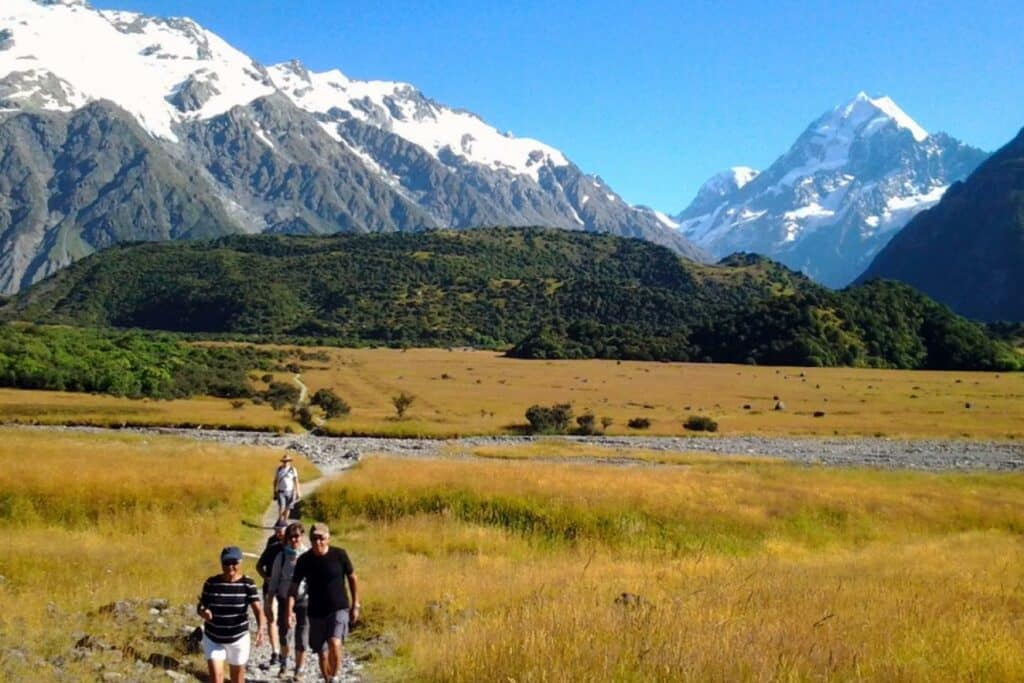
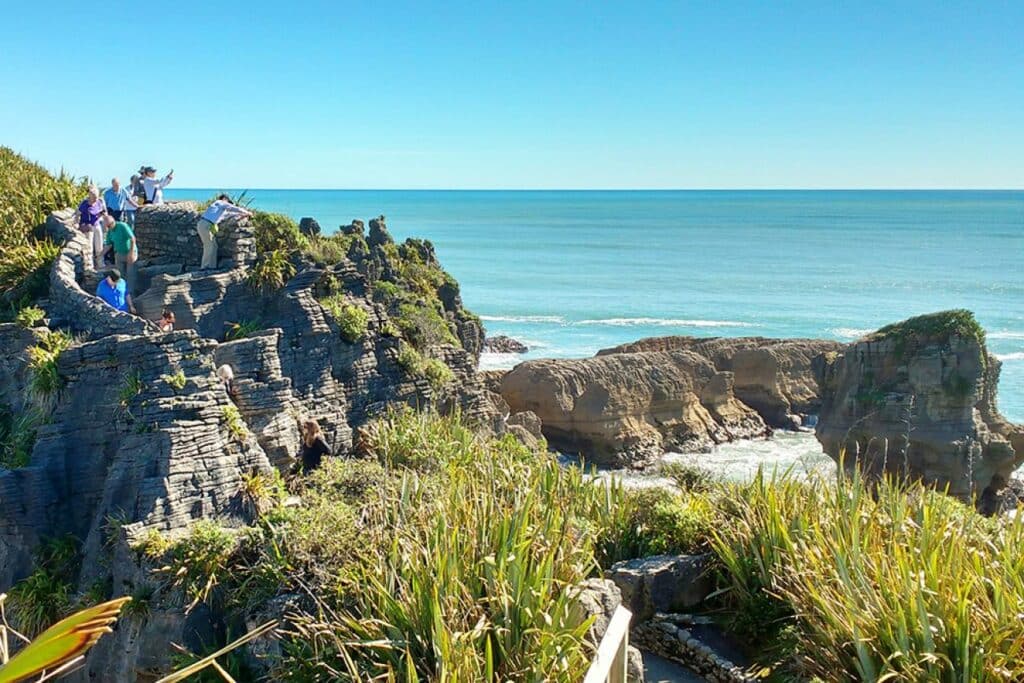
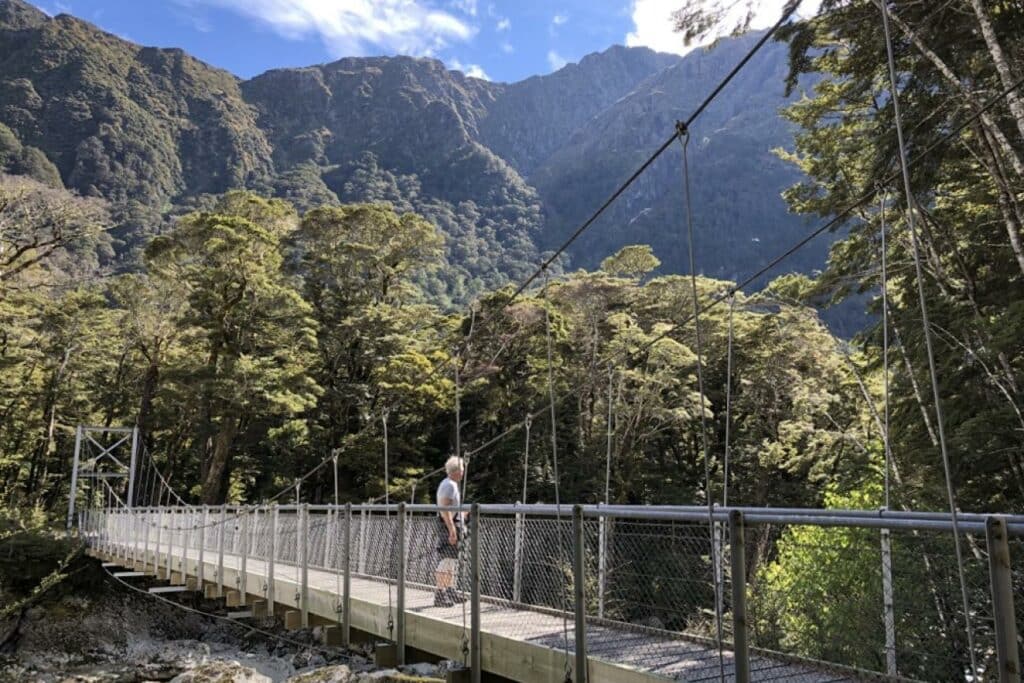
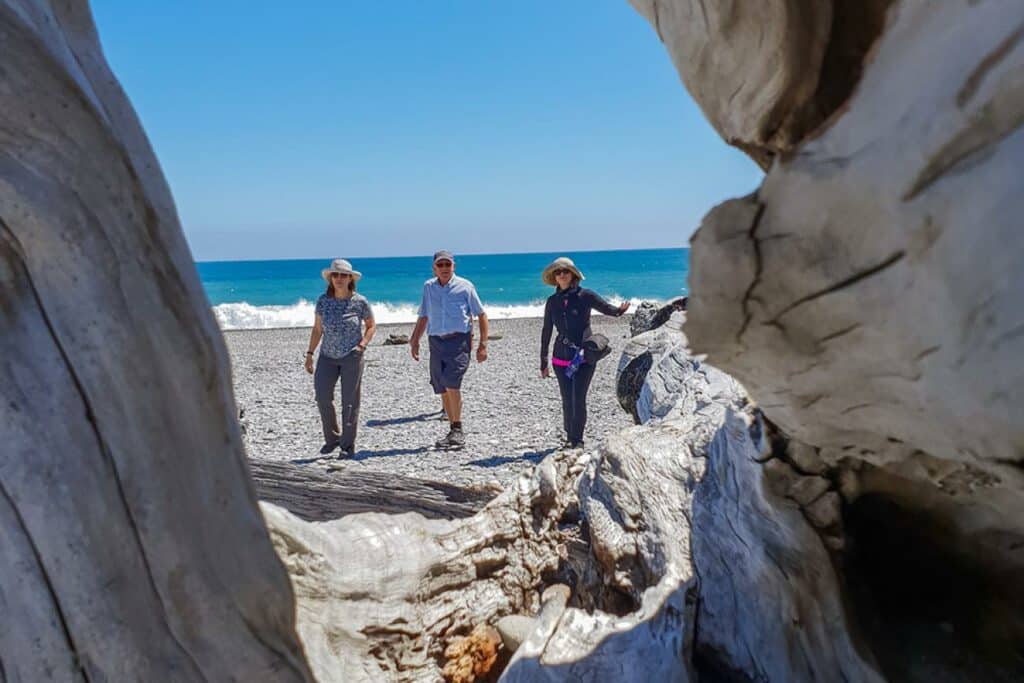
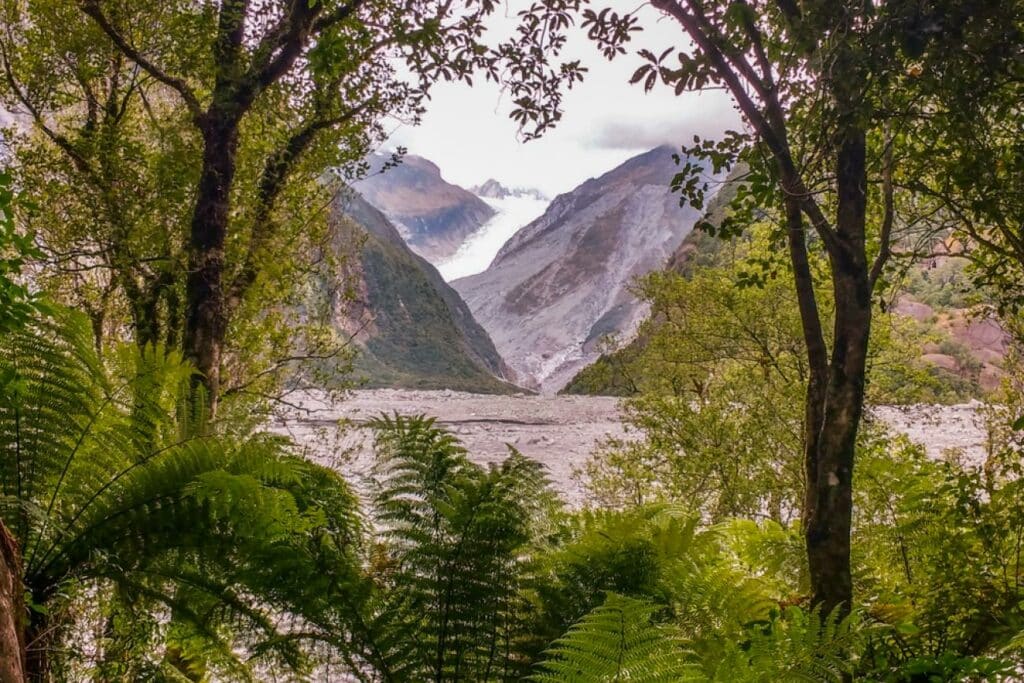
These walks are spread all over the country, and represent a kind of a “best of” New Zealand short walks. If you’re not going to all of these places on your trip, here’s an excellent tool on the DOC website, where you can enter the region, place, desired length and difficulty to find just the right walk for you. Now this is the kind of thing we like to see our tax dollars spent on!
Here’s a short video of some of New Zealand Department of Conservation’s favourite short walks:
Find about the best short walks on a MoaTrek tour
We’ve been showing visitors to New Zealand the best of New Zealand since 1971 and we’ve logged a few miles on walking tracks from North to South in that time. Our Kakapo 21 day New Zealand tour includes a great cross section of walks, from the coastal walks of Northland and Abel Tasman, the volcanic landscapes of Tongariro to the rivers and glaciers of the Southern Alps.
How fit do I have to be to enjoy short walks in New Zealand?
The walks we love the most are between two and four hours, like the fantastic walk from Awaroa Beach to Torrent Bay on the Abel Tasman Coastal Track. This is one of the longer walks our guests enjoy and usually takes around 4 – 5 hours of walking.
Others are much shorter, like Kea Point in Mt Cook, which is under 1.5 to 2 hours return.
That’s the great thing about visiting New Zealand for a walking holiday, you have so much choice. Many of our guests tell us they love the 2 – 4 hour walks we include in our tours as they can see and do other things on the same day, but still feel like they’ve spent been active in our great outdoors.
To enjoy these short walks you should to be able to walk for at least 2 hours carrying a day pack, stopping for short breaks along the way but keeping up your momentum.
On our walks, we always take plenty of breaks, so you don’t have to worry about keeping up a quick pace or not stopping at all, but to enjoy yourself on these walks it’s best to be in good shape so you enjoy it.
Here’s a good test, if you can walk around your neighbourhood or local park back home for up to 2 hours then you’ll be fine. If you’re a golfer and can walk 9 holes, then no problem at all.
What do I need to bring to enjoy short walks in New Zealand?
1. Bring the right shoes for walking
The most important thing is your footwear. If you’re doing one of our famous tracks like the Milford or Routeburn, you’ll need a pair of strong sturdy hiking boots. But for shorter walks we recommend a pair of hiking shoes like the ones in the picture. You’ll need more than running shoes or town shoes, so we recommend a pair of purpose built, sturdy hiking shoes. These can be worn on many days of your trip, if you’re walking or not and you’ll probably end up wearing these shoes more than any others.
If you’re buying new shoes for your trip then we definitely recommend breaking them in before you travel. Nothing is worse than having to deal with sore feet or blisters on holiday, so make some time to go for a few walks around your neighbourhood before you leave home. It’s a great opportunity to test all your gear and will get you excited about your trip too!
2. A good breathable waterproof jacket
Even if you’re coming to New Zealand in the middle of our summer, you need to prepare for any kind of weather. A good jacket is essential for anyone visiting New Zealand, regardless of the time of year and whatever activities you’re planning.
Make sure it’s fully waterproof with Gore-Tex or similar. You also want to make sure it’s breathable so you don’t overheat. Most modern jackets these days are both fully waterproof and breathable so you don’t have to worry too much unless your jacket is really old. In that case you should splash out on a new one for the trip. Just ask the staff in your local outdoor store what they recommend, make sure you tell them you’re going to New Zealand, they’ll all be super jealous!
3. Breathable, quick dry clothing you can layer up and down with
This is really important and if you do this right then you will enjoy all your walking in New Zealand so much more. When you’re outside walking you will get hot, then cold, then hot etc, the weather will also change so you need to be prepared.
So here’s how you do it. Wear one breathable quick dry base layer next to your skin. We love Merino wool best for this. A T-shirt style is probably best for the base layer as you want to be able to put layers over the top. Then your mid layer, this can be either a micro-fleece type or a long sleeved shirt type, it’s up to you but the important thing here again is to make sure it’s quick dry fabric and breathable. Then on top of that goes your jacket, a fully waterproof (gore-tex or similar) jacket is best. A good jacket can double as both wind and rain protection so it cuts down on the number of garments you need to carry (less is always more for walking!).
If you feel the cold you may also want to bring another layer or two, a sleeveless vest, long sleeved T-shirt type or even long johns, but make sure they all roll up nice and small. Also essential are hats (we recommend on for sun protection and one for the cold) and gloves. You may not take all of these with you on every walk but you will definitely want to organize this gear before you leave for New Zealand.
MoaTrek Kiwi Guide Tip for Walking in New Zealand
The most important thing to remember is to make sure your clothing is made of breathable quick dry fabric. When you’re outside walking you will warm up and sweat, so it’s really important that all of your clothes are the breathable moisture wicking type. If they’re not the sweat stays next to your skin and you get cold on a cold day or overheat on a hot day. This means no T-shirts, no jeans and no bulky sweaters.
Another advantage of quick dry clothing is that you can get it dry overnight when you do laundry.
We absolutely positively recommend Merino wool garments. They are so toasty and warm when it’s cold but breath and are cool when it’s hot. You may have some Merino already but if there’s one souvenir from New Zealand anyone will love it’s a Kiwi Merino garment. Get one or two for yourself too.
4. What kind of backpack is best for short walks?
This is also really important for your whole trip, not just your walking so it’s worth taking the time to get one that’s right for you. Luckily you have a lot of choice out there on the market. Here are the important things to consider when choosing a backpack for your walking trip to New Zealand.
Size – In terms of litres or gallons, a 30 – 40 litre backpack is the right size for day walking. This will double as your daypack on travel days and your carry on luggage on flights.
Pockets – Having several external pockets is always handy and most day packs on the market these days seem to offer this. Having a small pocket at the top for things like sunscreen and lip balm, a drink holder on the side and even a separate document compartment are all handy features.
Fit for Purpose – There are day packs and day packs and if you’re coming on a walking holiday to New Zealand then we recommend a sturdy well made pack from one of the leading manufacturers as opposed to a fashion style backpack.
A good way of telling whether a backpack is good for travel and walking is by looking at the straps, if they are sturdy and keep the pack nice and stable when you try it on that’s a good sign. Loose thin straps and a backpack that flops around all the time when you walk may be better for that trip to Paris for fashion week as opposed to your walking holiday in New Zealand.
The material should be strong thick fabric with waterproofing, not thin fabric.
A note about day packs and waterproofing
Many day packs on the market will be treated with some waterproofing surface but it’s important to remember that any daypack with zips will not be completely waterproof, even if there are covers over the zips. In heavy rain the water can seep through the zips.
One solution to this is drybags, which are available in all shapes and sizes from most outdoor outfitters. Put the gear you want to keep dry in a drybag, then inside your day pack and you’re good to go.
5. Other handy gear to bring on my New Zealand walking holiday
As well as the essentials mentioned above, there are a few other accessories and items of gear that you should bring along as well. Many of these things can be picked up once you’re here in New Zealand if you don’t have them.
- A water bottle. Reduce waste and bring your own reusable water bottle. We like the metal types that keep water cooler for longer. Water from the taps (faucets) is good to drink and you can fill up from your accommodation or even better, a mountain stream on your hike!
- Spare bootlaces
- Binoculars
- Sunglasses
- Insect repellent, sunscreen and hand sanitizer
- Walking poles, the collapsable type you can fit into your suitcase.
- Extra memory cards for your camera
- Swimsuit and quick dry towel
Should you join a Walking Tour or Travel Self Guided?
This is a question you will probably think about quite early on in your travel planning as it will affect many of your decisions and bookings. There are pros and cons of each and it really comes down to you. Here’s a quick summary:
| Reasons to Join a guided Walking Tour | Reasons to Self Guide on your Walking Holiday |
|---|---|
| All the transport and navigation are taken care of. Particularly handy for enjoying walks where you start and finish in different places. | You make your own schedule, there’s no timetable or other travellers to consider. You are free to linger as long as you want. |
| Walk and meet with other like minded people. Excellent for couples who want to travel with others but may have different walking paces. | You don’t have to worry about making an effort to get on with all the different personalities a group tour can bring. |
| Great for couples that include one walker and one “non walker”. Depending on the tour, many will cater for walkers and non walkers in the same group. | You don’t have to adjust your walking pace for anyone else. If you like to walk a long way, or not, each walk is exactly as you want it. |
| Support from your guide and tour company if anything goes wrong. | Go bush walking. If you’re on your own you can really go off the main roads to discover places tour companies don’t or can’t get to. |
| Local knowledge. Nothing beats inside information and local guides will have plenty of this. | Great for control freaks. If you don’t like anyone telling you what to do, self guided travel may be the option for you. |
| Great for solo travellers, you’ll immediately have a group of new friends to travel with and the safety and security of being with a guide. | Great for the connected traveller. If you like connecting to the global community of travellers and following tips and recommendations from others online you are free to discover new spots on a whim. |
Whether you travel by yourself or in a group is really a question of personal preference. Many of our guests tell us they wouldn’t have walked as much if they hadn’t been in a group and having the support of the guide and an option to pass on a walk if they don’t want to was great.
If you are thinking about travelling in a group tour, read our handy guide to finding the right tour here.
We hope you’ve enjoyed this “Beginners Guide to Walking in New Zealand” and we know you’ll love all the great short walks once you’re here. Find out more about our tours here and please get in touch with one of the friendly MoaTrek team if you have any questions at all about your New Zealand trip.
Other New Zealand Walking Articles & Guides
Read a Summary of the Short Walks included in our tours
See our favourite walking photos in our New Zealand Walking Gallery
New Zealand National Park Guide


